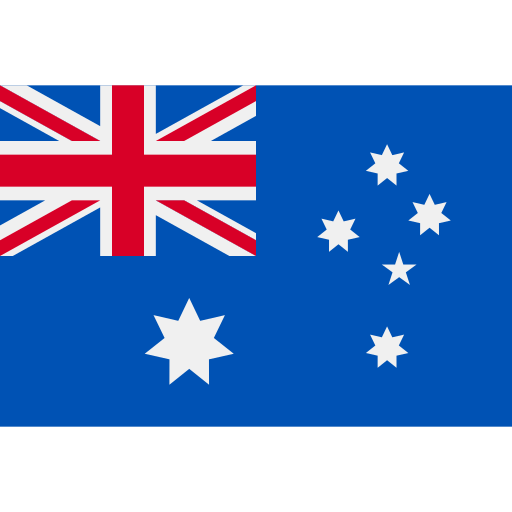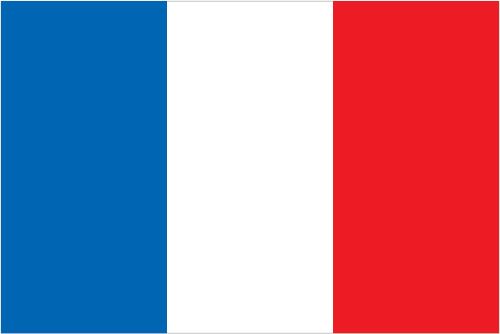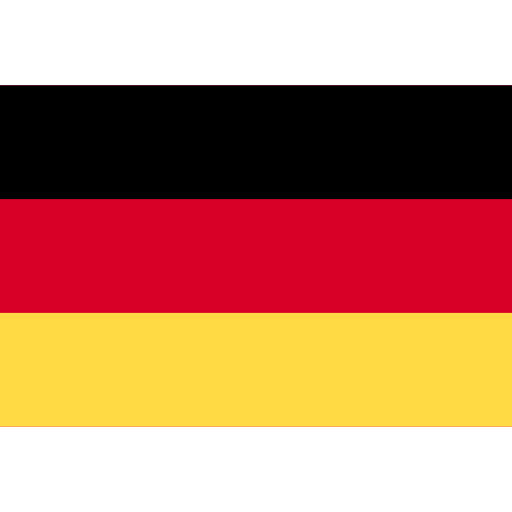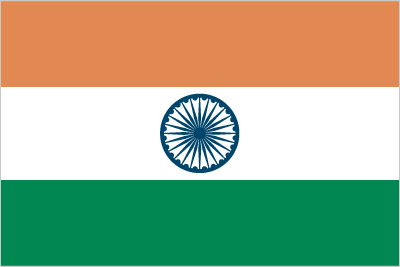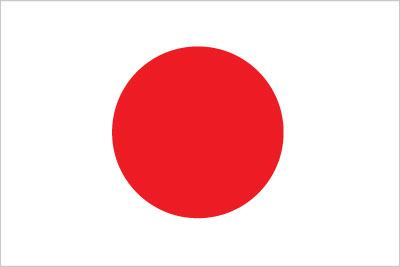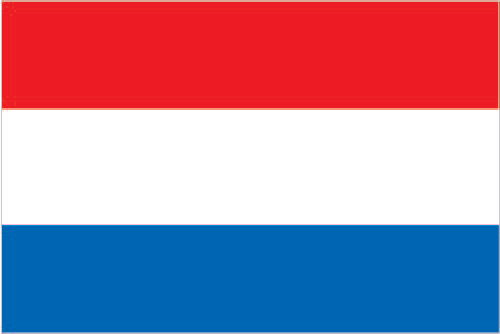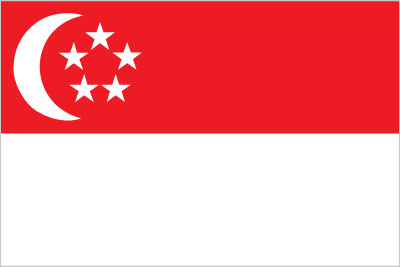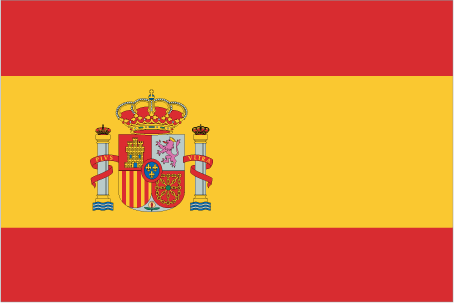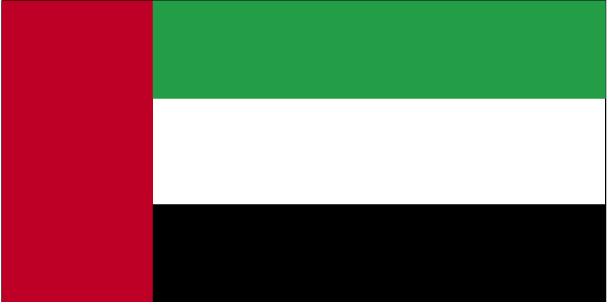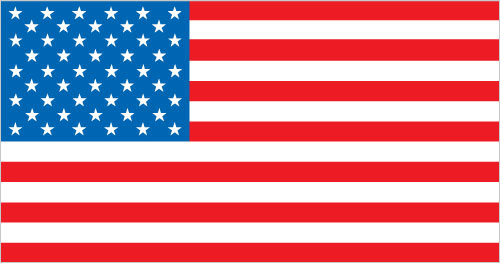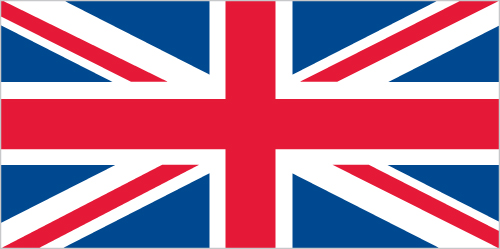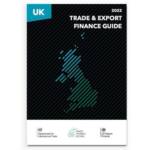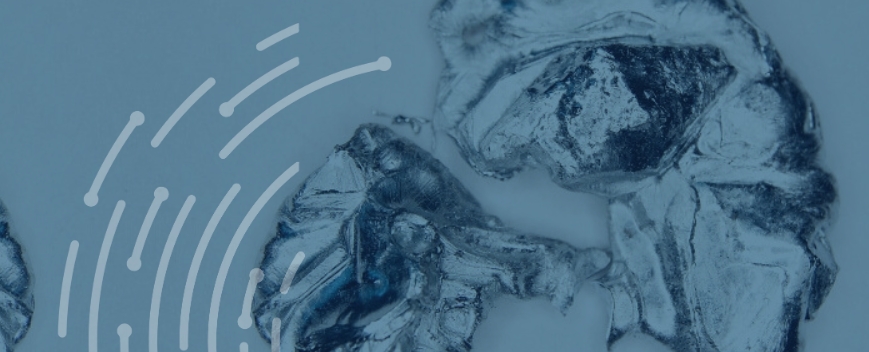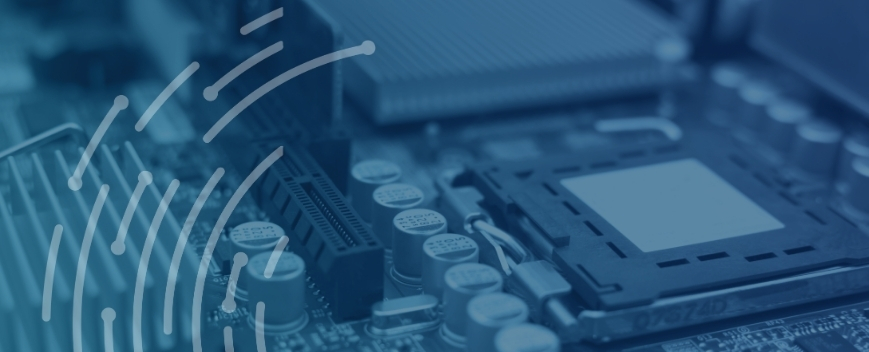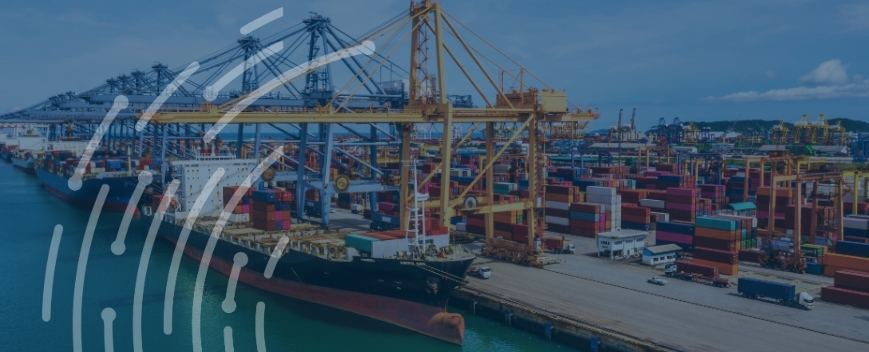

Access trade, receivables and supply chain finance
We assist companies to access trade and receivables finance through our relationships with 270+ banks, funds and alternative finance houses.
Get StartedContent
GSM 102 is a program related to Export Credit Guarantees by USDA – the United States Department of Agriculture. This program aims to encourage commercial export financing of agricultural commodities from the US by providing credit guarantees.
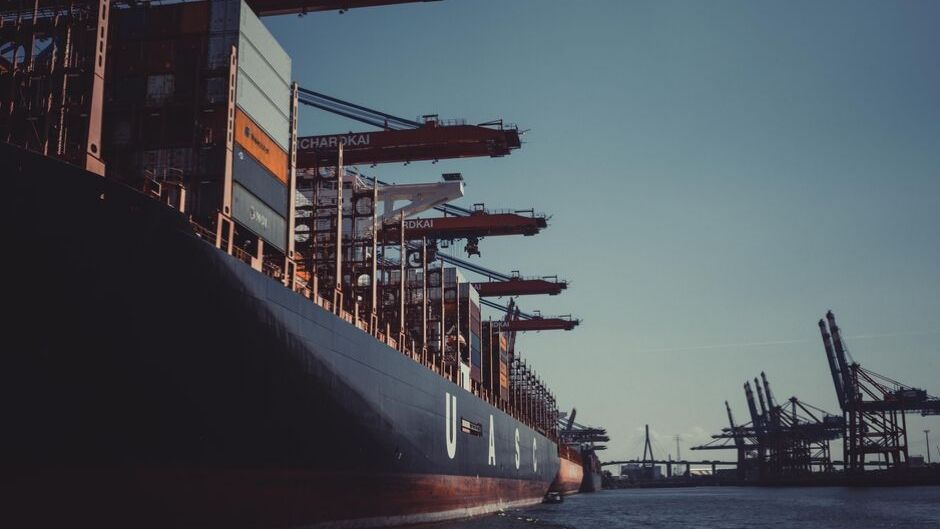
The program reduces the financial risk for lenders. Plus, the guarantee of credit encourages the export of American agricultural goods to the importers in as many countries worldwide as possible, especially in developing countries.
However, the importing company in the developing country must have adequate financial strength and ability to make scheduled payments, with prompt availability of foreign exchange.
GSM 102: An Overview
If you want a quick understanding of what the GSM 102 program is, then you have come to the right place. Continue to read how GSM 102 works, who can participate and how.
How GSM 102 Works?
The credit guarantee provided by the GSM 102 program is typically utilized by the private financial sector within the United States. In some cases, it can be procured by US exporters as well. The program covers up to 18 months of credit term. However, these maximum credit terms may vary by country.
The private financial sector extends credit guarantee to an approved financial institution in a foreign country using an irrevocable, dollar-denominated letter of credit. The aim is to make it easy for a foreign importer to purchase US agricultural and food products.
USDA’s Commodity Credit Corporation (“CCC”) provides a guarantee of payments to exporters that will be due from an approved financial institution in a foreign country. It can also be a financial institution in the US. However, it is obligatory to obtain financing via standard commercial sources.
Typically, up to 98 percent of principal of interest are taken care of by a the guarantee. However, the importers must negotiate any follow on agreements for credit with the foreign financial institution separately, as the CCC guarantee will not cover this arrangement.
You can get information for each country on the FAS official website. You will also find information and requirements on other programs and commodity allocations.
What Determines the Eligibility of a Country or Region?
All interested parties, including foreign importers, US exporters, and financial institutions can request CCC to set up a GSM 102 program for a specific region or country. CCC will evaluate the ability of each region, country, and foreign financial institution before announcing the availability of credit guarantees.
CCC may add the new financial institution at its discretion. Plus, they may decrease or increase the levels of approval for other existing countries and financial institutions on the CCC’s approval list. This depends on the changing circumstances of the world’s economy and political activities.
Who are the Eligible Commodities?
CCC solely selects all agricultural products and commodities according to the demand and marketing potential. Additionally, the eligibility criterion also relies on regulatory requirements and applicable legislation.
Who Can Participate?
Once a financial institution or a country gets approval by CCC for participation, the exporter from the US can negotiate the export sale’s terms with the importer. Once a company’s export sale exists, the qualified exporter from the US must ensure that they apply for a guarantee of payment before the export date.
The US exporter pays a fee calculated on an amount guaranteed in US dollars. The rates of the fee are currently dependent on the country’s risk that CCC is willing to undertake.
Other factors in determining fee rates are macroeconomic variables for each country, risk of a foreign bank, the repayment term, and frequency of repayment under the guarantee.
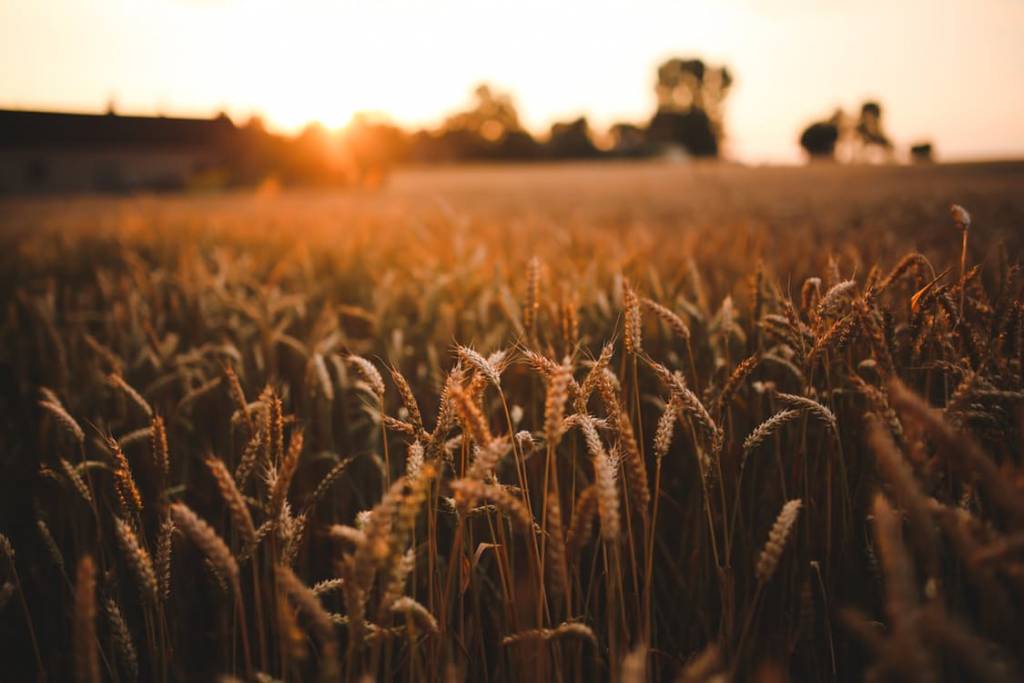
Claims and Defaults
If a foreign institution such as a bank fails to make payments covered via a GSM 102 credit guarantee, the party who is a holder of the payment/credit guarantee must immediately send in a notice of default directly to CCC within a timeframe specified in the GSM 102 regulations.
The party must send the claim for a default on the payment guarantee within the specified timeframe. If the CCC finds the claim to be legitimate, they will pay the guaranteed credit.
The exporters within the United States must obtain the required documents to prove that the products arrived at the destination region or country. They must submit these documentations to the CCC for audit purposes.
It is obligatory for both assignee and exporter to maintain all transactional documentation for at least five years from the completion date of all payments.
How to Participate in the GSM 102 Program
To participate in the GSM 102 program, one may follow the below-mentioned list of nine steps.
- Find out if CCC has already approved a credit guarantee for the importing country that you want to conduct business with.
- If the GSM 102 coverage is available, all you have to do is contact an exporter in the US who is eligible to get a guarantee by CCC and willing to sell the US agriculture products on reasonable terms.
- Check with the local banks in your country that have been approved by CCC if they have credit agreements with one or multiple financial institutions within the US. You must acquire a preliminary commitment from the bank of your choice so they can handle your pre-planned transaction.
- Always enter a sales contract that is consistent with commodity, country, and CCC allocations and ensure that the exporter you are working with is an eligible one.
- You must then arrange for the local bank (CCC approved) to send an irrevocable letter of credit with dollar denomination to the bank in the US. The letter of credit will be in favor of the exporter.
- Once the US financial institution confirms the LC to the exporter in the US, the export will proceed to ship the promised goods as per the sales contract.
- Once the importer receives the goods, the importer’s bank will settle the transaction and release documents required by the importer.
- Once the importer receives the goods, they will pay their local bank who will then forward the payment that includes principal and interest to the bank in the US.
- The importer also provides entry documents to the exporters, so they have proof of delivery as well.
Understanding the GSM-102 Export Credit Guarantee Program
The GSM-102 Export Credit Guarantee Program, administered by the United States Department of Agriculture (USDA) through its Foreign Agricultural Service (FAS), supports the export of U.S. agricultural commodities by underwriting credit extended by U.S. financial institutions to approved foreign banks. This program helps make U.S. agricultural products more competitive in markets where credit is less readily available or where commercial financing alone would be insufficient.
Historical context
The roots of the GSM-102 program trace back to the mid-20th century, when the United States sought to strengthen its role in global agricultural markets by leveraging surplus production to support foreign policy and economic development goals. Initially created under the Agricultural Trade Development and Assistance Act of 1954 (also known as Public Law 480), the program evolved as part of a broader framework to stabilise U.S. farm incomes while addressing global food shortages.
The GSM-102 program, in its modern form, was formally established in the 1980s under the Commodity Credit Corporation (CCC). It was designed to support private sector financing for agricultural exports, moving away from more concessional government-to-government credit arrangements. Over the decades, it has been restructured multiple times to respond to market demands, fiscal scrutiny, and trade negotiations, especially during global trade talks like the Uruguay Round.
What is GSM-102?
GSM-102 is a credit guarantee mechanism rather than a direct loan or grant program. It provides assurance to U.S. financial institutions that a substantial portion of the credit risk on export sales will be mitigated through a USDA guarantee. This encourages private banks to finance transactions they might otherwise consider too risky.
The program is designed primarily to promote exports of U.S. agricultural goods to developing countries and emerging markets by making U.S. suppliers more competitive on payment terms.
More information about GSM-102 on USDA’s website
Key objectives
- Facilitate the export of U.S. agricultural products
- Enable competitive financing for foreign buyers
- Mitigate risk for U.S. financial institutions
- Support U.S. agribusinesses and farmers
- Encourage trade in markets with limited access to commercial credit
How it works
- A U.S. exporter enters into a commercial sales contract with a foreign buyer.
- The foreign buyer obtains credit from a foreign bank to pay for the goods.
- A U.S. bank provides financing to the foreign bank.
- The USDA issues a credit guarantee to the U.S. bank covering up to 98% of the principal and a portion of the interest.
- If the foreign bank defaults, USDA reimburses the U.S. bank for the guaranteed portion.
Step-by-step guide to participation
For U.S. exporters:
- Register with the USDA’s Foreign Agricultural Service.
- Confirm the eligibility of the commodity and destination country.
- Enter into a sales agreement with a foreign buyer.
- Coordinate with a U.S. bank willing to extend credit under the program.
- Submit required documentation including proof of shipment.
- Receive payment from the U.S. financial institution.
For U.S. financial institutions:
- Apply and receive USDA approval as a participating bank.
- Conduct due diligence on the foreign bank.
- Structure the transaction in line with GSM-102 terms.
- File a guarantee application with USDA.
- Monitor repayments and report defaults as applicable.
For foreign banks:
- Undergo USDA vetting and approval process.
- Partner with local importers to arrange financing.
- Commit to repayment terms and issue payment to U.S. bank.
Eligible commodities
GSM-102 covers a wide range of U.S. agricultural products. The list is regularly updated to reflect market demand and policy priorities. Eligible commodities include:
- Grains: wheat, corn, rice, barley
- Oilseeds: soybeans, canola
- Animal products: beef, poultry, pork, dairy
- Cotton and textiles
- Processed foods and intermediate goods
Check the current list of eligible commodities and countries
Program structure and participants
Exporters
- Must be U.S.-based and registered with the USDA
- Enter into export contracts with overseas buyers
- Receive payment from U.S. financial institutions upon shipment
Foreign buyers and banks
- Foreign buyers are responsible for arranging credit through local (foreign) banks
- These foreign banks must be approved by USDA
- The banks accept repayment responsibility and are liable under the guarantee
U.S. financial institutions
- Provide credit to foreign banks for the export transactions
- Rely on the USDA guarantee to mitigate repayment risk
- Must adhere to USDA procedures and documentation standards
Key features
- Coverage: Up to 98% of principal and a portion of interest
- Tenor: Up to 18 months for most transactions, with shorter terms available
- Currency: Transactions are generally denominated in U.S. dollars
- Repayment: Typically in semiannual instalments
- Fees: Exporters or financial institutions may be subject to fees determined by USDA
Advantages of GSM-102
For U.S. exporters
- Access to new markets: Allows exporters to reach buyers in developing economies
- Competitive financing terms: Enables offering longer or more favourable payment conditions
- Risk mitigation: Reduces exposure to non-payment by shifting risk to USDA
For U.S. financial institutions
- Reduced credit risk: Government guarantees lower the cost of financing and increase risk appetite
- Increased transaction volume: Banks may take on more deals with reduced risk exposure
For foreign buyers
- Improved access to financing: Buyers in credit-constrained markets can purchase U.S. goods
- Stable supply: Encourages long-term commercial relationships
Disadvantages and cautions
- Complex compliance procedures: Participating parties must adhere to strict documentation, reporting, and eligibility rules
- Partial coverage: The guarantee does not fully cover all credit risk
- Exchange rate exposure: As loans are typically denominated in U.S. dollars, buyers may face currency mismatch
- Limited scope: Only selected countries, banks, and products are eligible
- Exposure to political risk: Transactions in politically unstable regions may still carry default risk despite guarantees
Cautions and compliance considerations
All participants should:
- Maintain accurate and timely documentation
- Stay updated with USDA’s changing eligibility criteria and regulations
- Conduct thorough credit risk assessments of foreign counterparties
- Understand the consequences of non-compliance, which may include penalties or disqualification
USDA also reserves the right to audit transactions and enforce program rules retroactively, which may affect reimbursements in cases of default.
Regulatory framework
The GSM-102 program is authorised under the Commodity Credit Corporation Charter Act. It operates under the supervision of the USDA FAS and must comply with federal trade laws, appropriations restrictions, and export control regulations. Oversight is conducted through regular reporting, internal controls, and third-party audits.
Impact on U.S. agricultural trade
The GSM-102 program is widely regarded as a key export promotion tool. It helps maintain market share in competitive global markets, supports rural economic growth, and ensures U.S. agribusinesses remain viable in price-sensitive regions.
Between fiscal years, usage of the program has varied depending on market conditions, interest rates, and foreign demand. It has proven most impactful in countries experiencing liquidity constraints or transitional economies.
Recent developments
The program has evolved in recent years to address risk exposure and expand market relevance. Enhancements include better risk assessment procedures, revised guarantee structures, and digital submission tools for participating financial institutions.
Additionally, USDA continues to adjust eligible countries and commodities based on market signals and policy objectives. Engagement with multilateral banks and local regulators is increasing to improve program adoption and oversight.
USDA FAS official GSM-102 program resources
Case example
A soybean exporter in Iowa may contract with a food processor in Bangladesh. The buyer arranges a 12-month credit facility via a USDA-approved bank in Dhaka. A U.S. financial institution issues the loan, backed by a USDA GSM-102 guarantee. If the Dhaka-based bank defaults, USDA pays out the guaranteed portion, allowing the U.S. bank to maintain confidence in future transactions.
Future outlook
Global trade conditions, climate change, and emerging geopolitical dynamics continue to affect agricultural markets. The GSM-102 program is expected to remain an important tool in the U.S. agricultural trade toolkit, especially as the USDA seeks to:
- Deepen engagement with African, Asian, and Latin American markets
- Improve digital access to guarantee systems
- Strengthen oversight and transparency
- Adapt to new commodities and trade flows
Technological advancements, ESG considerations, and sustainability-linked trade finance are likely to shape the next phase of the program’s evolution. However, future expansion will depend on congressional support, global economic trends, and competition from other exporting nations.
Overview of the Export Credit Guarantee Program (GSM-102)
The Export Credit Guarantee Program (GSM-102), administered by the United States Department of Agriculture (USDA) through the Commodity Credit Corporation (CCC), provides credit guarantees to encourage financing of commercial exports of U.S. agricultural products. By reducing financial risk to lenders, these guarantees facilitate exports to buyers in countries—mainly developing countries—that have sufficient financial strength to have foreign exchange available for scheduled payments.
Program objectives
GSM-102 aims to expand and maintain foreign markets for U.S. agricultural commodities and products by encouraging commercial financing. The program operates in a manner intended not to interfere with markets for cash sales.
Introduction to the XRP Ledger (XRPL) in Trade Finance
Introduction
Trade finance is the lifeblood of global commerce, enabling importers and exporters to bridge funding gaps and manage risks in international trade transactions. Traditionally, this domain has been burdened by paper-intensive processes and high transaction costs, with procedures like letters of credit and invoicing often taking days or weeks to settle. In fact, trade finance has long relied on extensive paper trails and incurred expensive fees . Such inefficiencies have spurred a strong business case for digitisation: by moving to digital platforms, cross-border trade payments can be executed faster, more securely, and more efficiently .
Enter the XRP Ledger (XRPL) – a decentralized blockchain platform known for its speed, low cost, and focus on value transfer. XRPL offers a modernised infrastructure that can streamline trade finance processes through instant cross-border payments, real-time data visibility, and tokenisation of assets. This introduction provides an overview of XRPL and its core functionalities, and examines how it applies to trade finance processes such as digitisation of documents, cross-border payments, and supply chain integration. We will also highlight examples of banks (particularly in India) adopting XRPL or Ripple’s technology, and discuss regulatory and compliance considerations in bringing blockchain to trade finance. The aim is to offer a comprehensive briefing on XRPL’s role in transforming trade finance, in a formal tone suitable for a professional audience.
Overview of the XRP Ledger (XRPL)
The XRP Ledger is a decentralized, public blockchain originally created in 2012 with the goal of enabling fast, low-cost global transactions. Often described as “the blockchain built for business,” the XRPL has been operating reliably for over a decade with no major downtime . It is maintained by a global community of validators and developers, rather than any single central authority . This design gives it resilience and neutrality, attributes important for financial institutions that require robust infrastructure.
Core Functionalities of XRPL: At its heart, XRPL is a payment settlement system and currency exchange network that can process transactions globally . It was built to allow banks and other institutions to transfer value across borders quickly and with minimal fees . Unlike many blockchain platforms, XRPL does not use energy-intensive mining; it achieves consensus through a unique protocol where independent validating servers agree on transactions in seconds . This consensus mechanism (sometimes called the Ripple Protocol Consensus Algorithm) allows XRPL to finalize transactions within 3–5 seconds, and to handle a high throughput – on the order of 1,500 transactions per second, compared to just 3–6 TPS on the Bitcoin network . Transactions on XRPL cost only fractions of a penny in fees, making micro-transactions and high-volume payments economically viable .
XRPL’s feature set is tailored for financial use cases. It has a built-in decentralised exchange (DEX) that supports peer-to-peer trading of multiple currencies and assets directly on the ledger . This means participants can exchange currencies (e.g. converting Indian rupees to euros) in one atomic transaction, simplifying foreign exchange in trade deals. The ledger also supports issuing tokens (often called IOUs) representing any asset or fiat currency . Financial institutions can therefore issue stablecoins or digitised financial instruments on XRPL, backed by real-world assets. (For example, an Australian fintech has launched an AUD-backed stablecoin on the XRPL , illustrating how national currencies can be tokenised to move on the ledger.) Other powerful features include cross-currency payments (the ability to seamlessly route a payment through multiple currencies and deliver a different currency to the recipient in one flow) , and escrow & multi-signature support which enables conditional payments and shared account controls. Such features can be analogous to trade finance instruments – e.g. escrow can mimic a letter of credit by locking funds until certain conditions are met, and multi-signature accounts can require approvals from multiple parties in a trade. Notably, the XRPL’s native digital asset, XRP, plays a role as a bridge currency and fee medium. XRP is used to settle transactions and prevent spam (every transaction destroys a tiny amount of XRP as a fee), and it can serve as a universal intermediary for exchanging value between different currencies on the network . XRP was pre-issued (100 billion units created at inception) rather than mined , a design choice that eliminates mining costs and delays. While this has drawn some criticism from cryptocurrency purists , it has also meant that XRP and XRPL were from the outset geared towards institutional utility rather than decentralization for its own sake . Indeed, by focusing on working with banks and payment providers, the XRPL has found real demand in the financial industry – a fact evidenced by its growing adoption.
XRPL in Trade Finance Processes
The qualities of the XRP Ledger make it a natural fit for addressing several pain points in trade finance. Trade finance encompasses a range of activities – from issuing guarantees and letters of credit, to invoice financing, cross-border payments, and supply chain tracking – all of which involve multiple parties and jurisdictions. Below, we explore how XRPL can enhance trade finance through digitisation, improved payments, and integration across supply chains.
Digitisation of Trade Documents and Processes
One of the biggest challenges in trade finance has been the reliance on paper documents (bills of lading, invoices, certificates) and manual reconciliation. The use of blockchain like XRPL offers a way to digitise and authenticate documents and record transactions in an immutable ledger accessible to all permissioned parties. By reducing manual paperwork and allowing shared access to authorised information, blockchain-based trade platforms can increase transparency and trust among exporters, importers, banks, and regulators . In practical terms, this could mean storing hashes or fingerprints of trade documents on the XRPL to prove their integrity and timing, or representing ownership of goods as a token that can be transferred instantly upon shipment delivery. Digitisation not only speeds up the process but also helps prevent fraud – for instance, a blockchain system can ensure that no two letters of credit are issued for the same invoice, a type of double-financing fraud that has been known to occur off-chain .
These improvements are not merely theoretical. In India, we see a strong push toward digitising trade finance workflows using blockchain. A consortium of 15 Indian banks formed the Indian Banks’ Blockchain Infrastructure Co. (IBBIC) to process domestic letters of credit using distributed ledger technology . Their blockchain-based L/C system has demonstrated significant efficiency gains – reducing the processing time for issuing and settling a letter of credit from 4–5 days to around 4 hours . While IBBIC’s platform is a permissioned blockchain tailored for Indian banks, it underscores the transformative potential of DLT (Distributed Ledger Technology) for trade finance. The XRPL, as a public blockchain, can play a complementary role on a global scale, linking disparate private networks and providing an open backbone for trade data. For example, important trade documents (or references to them) could be anchored on XRPL for cross-border verification, even if the detailed workflows are managed on private side-chains or bank consortia systems. The key is that XRPL provides a neutral, secure registry for facts (like a shipment’s status or a finance instrument’s issuance) that all parties can trust. By digitising trade finance processes in this way, banks can also facilitate automated compliance checks – indeed, over 63% of banks agree that digitisation helps with regulatory compliance and better client profiling in trade finance .
Cross-Border Payments and On-Demand Liquidity
Efficient cross-border payments are the cornerstone of trade finance. When goods are shipped across continents, payments must follow – often moving through a maze of correspondent banks, currency conversions, and varying national payment systems. This legacy infrastructure means international payments can take several days, with uncertainty in timing and high fees at each step . For businesses engaged in trade, these delays tie up working capital and introduce risk, as a payment might arrive late or short of the expected amount due to intermediary charges. Ripple – the company associated with XRPL – often illustrates this point humorously: it can feel easier to put cash in a suitcase on a plane than to send an international wire transfer .
The XRPL directly tackles this issue by enabling real-time gross settlement of cross-border transactions. A payment sent over XRPL in one currency can arrive to the recipient in another currency within seconds, thanks to the ledger’s ability to do FX conversion via its built-in DEX and the XRP bridge asset. This has profound implications for trade finance. It means an importer’s bank in, say, India can instantly send payment in INR and have the exporter receive the equivalent USD or EUR almost immediately, with transparent FX rates and minimal fees, all recorded on a tamper-proof ledger. Ripple’s network has been specifically built to support cross-border payments and international transactions – essentially a “bitcoin for banks,” as one trade finance publication described it . Many major banks worldwide have already trialled or adopted Ripple’s DLT solutions for cross-border payments, with Ripple often at the forefront of these initiatives . In one early pilot, a dozen banks used XRP (the XRPL’s native token) to rebalance liquidity in real-time across borders, demonstrating the feasibility of on-chain settlements for international transfers .
Crucially, XRPL enables what is known as On-Demand Liquidity (ODL). This refers to using XRP as a bridge currency to eliminate the need for pre-funded foreign currency accounts (nostro/vostro accounts) that banks traditionally maintain in trading partner countries. Ripple’s ODL service taps XRP as a real-time liquidity tool – essentially converting, for example, Indian rupees to XRP and then XRP to Philippine pesos within seconds via XRPL, to complete a payment from India to the Philippines without either bank holding balances in the other’s currency. This 24/7 capability eliminates pre-funding, shortens transaction times to mere seconds, and dramatically reduces costs while providing full transparency on rates and fees . For trade finance, the implications are significant: banks and companies can free up capital that was previously trapped in idle accounts around the world, deploying that cash to more productive uses in their businesses . They also spend less time managing multiple correspondent relationships and reconciliations. Ripple reports that its ODL solution, by operating even outside of banking hours, gives corporates greater flexibility and has been gaining momentum globally, including adoption by payment providers and banks in regions like Brazil, France, and Singapore .
Real-world examples abound. Indian banks, in particular, have been early experimenters in using Ripple’s network for cross-border trade payments. Axis Bank became the first bank in India to adopt Ripple’s blockchain network for remittances, enabling real-time settlement for its international payment services . Around the same time, Yes Bank in India announced it was exploring distributed ledger technology for supplier financing, aiming to streamline financing for its corporate clients using blockchain . Another leading private bank, Kotak Mahindra, joined RippleNet to facilitate inbound remittances to India; using Ripple’s xCurrent (a payment messaging and settlement solution), Kotak was able to reduce the average transaction time for cross-border payments from days to minutes , with end-to-end tracking. IndusInd Bank, which has significant cross-border remittance business, partnered with Ripple in 2018 to harness blockchain for faster and cheaper payments into and out of India . According to IndusInd, this alliance would allow it to offer instant settlements and atomic (simultaneous) confirmations, greatly improving customer experience in the payments space . Likewise, Federal Bank of India announced a tie-up with Ripple to use its platform for cross-border remittances, touting that blockchain would make transactions safer and more secure . These examples highlight a pattern: Indian financial institutions see value in using Ripple’s XRPL-based network to expedite trade-related payments, especially remittances and supplier payments, which are essential components of trade finance. It’s notable that many of these banks connect to regions with large trade or diaspora links (Middle East, North America, etc.), and leveraging XRPL helps them compete by offering speed and cost advantages.
Beyond India, other banks and fintechs around the world have integrated with XRPL or RippleNet for trade and payments. A case in point is Euro Exim Bank, a global trade finance institution based in London and St. Lucia, which was one of the first banks to use XRP for cross-border payments. Euro Exim Bank’s Director stated that as a leader in trade finance solutions, they sought new payment channels and liquidity sources – and by working with Ripple to implement xCurrent and xRapid (the former name for ODL), they could offer clients faster, cost-efficient transactions without needing pre-funded accounts . In practice, Euro Exim Bank uses XRP to source liquidity on-demand when sending payments on behalf of customers, avoiding the hassle of correspondent banking and enabling near instant value transfer . Such innovation is particularly beneficial for small and medium enterprises in emerging markets, for whom traditional cross-border payments are often slow and costly.
Supply Chain Integration and Tokenisation
Trade finance does not operate in a vacuum – it is deeply intertwined with physical supply chains. Goods move across various checkpoints (manufacturers, shippers, ports, warehouses), and at each point, data and documents are generated that are relevant to financing (for instance, a shipping confirmation might trigger an invoice payment or release of funds from escrow). XRPL can serve as a shared ledger that connects these supply chain events with financial transactions, creating a more integrated trade ecosystem. By using IoT devices or oracles feeding data to the blockchain, an event like “goods delivered at port” could automatically unlock a payment to the supplier via a smart contract or escrow on XRPL. This level of automation reduces the need for manual interventions and ensures that finance is synchronized with actual goods movement.
We are beginning to see pilots that marry supply chain processes with XRPL. In 2024, Ripple partnered with firms in Japan (including SBI Holdings and HashKey) to build supply chain finance solutions on the XRPL, making SBI’s affiliated companies among the first in Japan to use blockchain for supplier financing . The goal of this initiative is to allow suppliers and buyers to conduct their invoice financing and settlement through tokens on XRPL, improving liquidity for suppliers and providing real-time visibility of the status of invoices and payments. By leveraging XRPL’s layer-1 capabilities, such a system can ensure that once a buyer approves an invoice, a tokenised claim (representing that invoice) can be traded or used as collateral, and payment can be made promptly on the ledger. Another potential use is inventory or warehouse receipt financing – where a token on XRPL represents goods stored in a warehouse, and a bank can lend against that token, knowing that it cannot be double-pledged or tampered with due to the ledger’s integrity.
Even without explicit tokenisation of physical goods, XRPL can improve supply chain transparency. Each actor (supplier, freight forwarder, bank, insurer) can operate a node or have access to the public ledger to see relevant transactions (or proofs thereof) in real time. This transparency builds trust: a buyer can be sure the supplier has indeed shipped the goods before releasing payment, and the supplier’s bank can verify that the payment is in transit before extending credit, all through the shared source of truth on XRPL. In the earlier mentioned Yes Bank initiative for supplier financing, the bank digitised transactions between a large corporate (Bajaj Electricals) and its vendors using a blockchain platform . The result was an almost instantaneous financing process for the supplier once goods were delivered . While that particular project may have used a private blockchain, the same principle applies to XRPL: by automating and securing the flow of information, supplier financing can be made faster and more efficient, integrating financing with the actual supply chain events.
Moreover, XRPL’s ability to support multi-currency payments can simplify supply chain logistics where multiple currencies are involved for procurement of parts, assembly, and final sale. A complex supply chain might involve raw materials from one country, manufacturing in another, and assembly in a third – XRPL could enable all the intermediate payments to be handled on one network, using XRP as a bridge to swap between currencies as needed. This harmonisation of payments reduces friction in multi-tier supply chain finance. It also opens the door to smaller suppliers in developing countries joining global supply chains, since they can receive payment digitally in local currency quickly, or access trade finance from global lenders who use the XRPL to disburse and collect funds.
Industry Adoption and Ripple’s Involvement
Ripple, the company behind many developments on XRPL, has been a driving force in promoting blockchain solutions in trade finance and payments. Through its RippleNet network and partnerships, Ripple has connected over 200 financial institutions worldwide , including banks, payment providers, and specialized trade finance firms. Notably, Ripple’s strategy has often involved working closely with banks and regulators to ensure its solutions meet compliance requirements – a critical factor for adoption in trade finance. Because of this focus, Ripple’s technology has gained a reputation as a more institution-friendly system. Analysts have pointed out that Ripple’s approach of working hand-in-hand with major financial institutions can make it less likely to face regulatory pushback, as compared to more anarchic cryptocurrency systems . This alignment with the needs of banks (sometimes summarized as “fintech with compliance in mind”) has made Ripple a major part of many banks’ DLT trials in trade finance .
In India, Ripple’s involvement has extended to collaborating with banking authorities and fintech hubs. For example, Ripple’s regional management in South Asia has engaged with institutions on how blockchain can support the massive inbound remittances market (over $80 billion annually for India) and trade flows. Indian banks like Kotak Mahindra have highlighted that joining RippleNet expanded their global payment network and improved transparency for customers . Meanwhile, Ripple’s solutions have also been used by banks in other emerging markets crucial to trade, such as in the Middle East and Southeast Asia, creating new payment corridors that facilitate trade-related payments (e.g. an exporter in India getting paid by an importer in the UAE through a RippleNet connection between their banks).
Ripple’s influence in the trade finance ecosystem is not limited to payments. The company has advocated for tokenisation of assets on XRPL that could impact trade finance, such as central bank digital currencies (CBDCs) and regulated stablecoins for trade settlement. Ripple has worked on CBDC pilots (for example, with the Royal Monetary Authority of Bhutan and the Republic of Palau) and has positioned the XRPL as a suitable platform for issuing stable, fiat-backed tokens. If trade settlements move towards digital fiat (say, an e-GBP or e-INR for trade invoices), XRPL could be an underlying network to support those transactions. Ripple is also a member of various industry forums and standard-setting bodies. It was an early adopter of the ISO 20022 financial messaging standard (important for integrating blockchain payments with traditional systems), and it has been involved in discussions led by organizations like the World Trade Organization (WTO) and World Economic Forum on the role of fintech in trade. By contributing to thought leadership and working on pilot projects, Ripple effectively acts as an ambassador of XRPL technology in trade finance circles.
One example bridging both Ripple’s involvement and industry adoption is the India Trade Connect project by Infosys Finacle, mentioned earlier, which roped in multiple banks (including IndusInd and Axis) for a blockchain-based trade network . Ripple’s solutions focus more on the cross-border payment layer, but there is a clear convergence: a trade blockchain network can use Ripple’s XRP-based liquidity to settle the payment leg of a trade transaction in real time. Indeed, blockchain in trade finance is scaling beyond proofs-of-concept, moving into production deployments , and Ripple’s offerings are often among the first choices for institutions looking to upgrade their cross-border payment infrastructure. Ripple’s own reports note that trade finance is one of the prominent next frontiers for blockchain after payments , and the company’s product roadmap (including ODL and new initiatives like tokenised services) reflects that trajectory.
Regulatory Perspectives and Compliance
Any innovation in trade finance must navigate a complex web of regulations: banking regulations, trade sanctions, anti-money laundering (AML) laws, import-export rules, and more. The use of blockchain and digital assets introduces additional considerations for regulators. Compliance and risk management are therefore central to adopting XRPL in trade finance.
Regulators worldwide have taken mixed stances on cryptocurrencies like XRP, even as they generally warm to the underlying blockchain technology. India’s regulatory experience is illustrative. The Reserve Bank of India (RBI) for a time forbade banks from dealing with cryptocurrency exchanges (citing risks to financial stability), effectively putting a curb on using assets like XRP in banking . (This 2018 RBI circular was later struck down by India’s Supreme Court in 2020, restoring the ability of banks to handle crypto transactions.) Despite its cautious stance on crypto trading, the Indian government and RBI have remained supportive of blockchain innovation. The RBI even established a dedicated unit for blockchain and AI to study potential applications and to craft appropriate regulations . The message is clear: “blockchain, not crypto” has been the mantra – authorities are keen to harness the efficiency gains of DLT in areas like trade finance, provided it does not compromise financial oversight. The formation of consortia like IBBIC and India Trade Connect had implicit regulatory backing, showing a willingness to let banks experiment under a watchful eye. As XRPL-based solutions make inroads, Indian regulators will likely insist on measures such as participants being known (no anonymous wallets for trade finance transactions), robust KYC/AML checks, and perhaps transactional limits or reporting akin to existing channels. The good news is that transactions on XRPL are transparent and traceable on a public ledger, which can actually aid auditors and regulators in monitoring flows – blockchain can enhance auditability and compliance if used properly (each transaction is timestamped and cannot be altered, creating an immutable audit trail).
That said, differing regulations across jurisdictions can pose a challenge. Trade finance by nature crosses borders, and a blockchain solution must be cognizant of each country’s rules. For example, a certain country might require trade-related payment data to be localized or encrypted, or might have capital controls affecting currency conversion. Regulatory fragmentation can hinder adoption of a unified blockchain solution . Industry bodies such as the International Chamber of Commerce (ICC) have been working on harmonising standards (e.g. the ICC’s Digital Standards Initiative promotes common standards for digital trade documents). In parallel, legal frameworks are evolving: several countries (including the UK, Singapore, and Bahrain) have updated laws to recognise electronic trade documents as legally equivalent to paper, which bodes well for blockchain-based trade documentation. As these frameworks mature, they will mitigate legal risks of using networks like XRPL for holding or transferring trade assets.
Compliance risks specific to using XRPL in trade finance include ensuring that sanctioned parties do not participate in transactions, and that the source of funds is legitimate. Banks using XRPL would likely use it as part of a permissioned workflow – for instance, two banks can agree to transact via XRPL for settlement, but the end customers on each side have been vetted by those banks off-ledger. RippleNet, in fact, was designed with a built-in messaging layer (similar to SWIFT) where banks exchange KYC data and payment information privately while the value moves over XRPL . This two-layer approach (information and settlement) helps reconcile the public nature of the blockchain with the confidentiality required in banking. Thus, a bank might send a payment over XRPL but attach invoices or customer details through a secure API between the institutions, rather than putting sensitive data on the public ledger.
Volatility risk is another consideration. XRP’s market price can fluctuate, which is a concern if it’s being used as a bridge currency for large trade payments. Ripple’s ODL mitigates this by minimising exposure time – XRP is held by a bank or payment provider for only a few seconds during a transaction, so the risk of value fluctuation in that brief window is negligible. Additionally, XRPL’s support for stablecoins and CBDCs means that in the future, one might conduct trade finance entirely with stable-value tokens (for example, an e-USD token moving on XRPL). This would eliminate crypto volatility risk while still utilising the blockchain’s efficiency. Indeed, we may see digital fiat tokens issued on XRPL for trade settlement in various corridors, subject to regulatory approval. The presence of major regulated entities as validators on XRPL could also reassure regulators about the network’s governance. Currently, validators include universities, exchanges, and financial institutions, and no single actor can unilaterally control the ledger – this decentralisation, ironically, provides resilience that regulators ultimately find desirable (no single point of failure).
Other risks like cybersecurity and operational risks must be managed. Holding private keys securely is paramount – an institution interacting with XRPL must secure its wallets against theft or hacking, similar to how online banking systems must be secured. Smart contract capabilities on XRPL (which are expanding through new features like Hooks for smart transactions) need rigorous testing to avoid vulnerabilities, especially if they are to represent complex trade finance logic. The industry is addressing these concerns by developing best practices (the World Economic Forum, for example, has published blockchain deployment toolkits highlighting legal and security checklists ).
In summary, regulators are increasingly acknowledging the potential of blockchain in trade finance, but they expect compliance with existing rules and prudent risk management. The approach being taken by banks and by Ripple has been to work within regulatory frameworks – for instance, ensuring that any XRP usage is fully accounted for and compliant, and engaging regulators in dialogue. This collaborative approach is paying off; many jurisdictions now have fintech sandboxes or pilot programs where blockchain trade finance solutions can be tested under supervision. As regulatory clarity improves (for example, clarity on the legal status of cryptocurrencies, or new laws to accommodate digital negotiable instruments), we can expect even greater adoption of XRPL in mainstream trade finance. The trajectory is one of cautious optimism: initial risks are being mitigated through technology (e.g. use of stablecoins to counter volatility) and governance (e.g. consortium-led blockchains to satisfy jurisdictional rules, which can later interconnect with public ledgers like XRPL).
Conclusion
The XRP Ledger stands out as a potent tool in the modernisation of trade finance. Its ability to provide fast, low-cost, and reliable cross-border settlement addresses one of the most persistent pain points in international trade. By serving as a single source of truth for transactions and documents, XRPL can reduce fragmentation and delay across the supply chain and financing chain. We have seen how banks in India and around the world are already leveraging this technology – from real-time remittance services to blockchain-based letter of credit platforms – to enhance efficiency and client service. Ripple’s involvement, providing enterprise-grade solutions on top of XRPL, has been instrumental in bridging the gap between traditional finance and the crypto-powered future, ensuring that solutions meet the stringent requirements of banks and regulators.
Of course, integrating XRPL into trade finance is not without challenges. Regulatory compliance and interoperability with legacy systems require careful planning. The ecosystem is still evolving, with efforts to standardise digital trade practices and to issue central bank digital currencies that could interoperate with networks like XRPL. Yet, the trajectory is clear: blockchain technology, exemplified by XRPL, is steadily transforming trade finance from a paper-driven, siloed endeavour into a digital, connected, and agile network. As rules and regulations catch up and more institutions come on board, the XRPL could very well become a foundational layer for trade finance transactions – much like the internet is for information exchange – providing a neutral, global ledger for value exchange and asset tracking across borders.
In conclusion, the XRP Ledger offers a compelling proposition for trade finance stakeholders: faster settlement, reduced costs, improved transparency, and access to on-demand liquidity on a 24/7 basis. These advantages align closely with the goals of trade financiers and corporates seeking to streamline international trade. With ongoing innovation (such as new features for smart contracts and interoperability) and growing adoption by banks and trade networks, XRPL is poised to play an integral role in the next generation of trade finance infrastructure, helping to digitise trade flows in India and around the world in a secure and compliant manner. The continued collaboration between industry players like Ripple, financial institutions, and regulators will be key to unlocking the full potential of XRPL in trade finance – a future where moving value is as seamless as sending an email, and where the age-old promise “payment against documents” is fulfilled through cryptographic certainty on the ledger.
How GSM-102 works
Under GSM-102, the CCC provides credit guarantees to U.S. financial institutions, covering a significant portion of the credit risk associated with loans extended to approved foreign financial institutions for the purchase of U.S. agricultural products. This guarantee assures U.S. banks that, in the event of default by the foreign bank, the CCC will pay the guaranteed portion of the loan. Typically, the CCC covers up to 98% of the principal and a portion of the interest.
Eligible commodities
The program covers a wide range of U.S. agricultural products, including:
- High-value, consumer-oriented processed products such as frozen foods, fresh produce, meats, condiments, wine, and beer.
- Intermediate products like hides, flour, and paper products.
- Bulk commodities such as grains, oilseeds, and rice.
Eligible countries and financial institutions
GSM-102 is primarily targeted at developing countries that demonstrate adequate financial strength to ensure the availability of foreign exchange for scheduled payments. The CCC evaluates and approves foreign financial institutions based on their creditworthiness and the economic and political environment of their respective countries. A list of approved foreign financial institutions is maintained and periodically updated by the USDA.
Application process
To participate in the GSM-102 program, U.S. exporters must follow these steps:
- Register in the System for Award Management (SAM) at SAM.gov.
- Submit the Exporter Qualification Application to the USDA.
- Once approved, create a USDA eAuthentication account to access the GSM Online System.
After completing these steps, exporters can apply for specific credit guarantees for their export sales.
Fees and repayment terms
The CCC charges guarantee fees for the GSM-102 program, which are determined based on factors such as the risk associated with the country and the foreign financial institution, as well as the repayment term. Repayment terms typically range up to 18 months, with specific schedules outlined by the CCC.
Program impact
By mitigating the financial risks associated with international trade, GSM-102 enables U.S. exporters to expand their market reach, supports the U.S. agricultural sector, and fosters long-term trade relationships with developing countries. The program also benefits foreign buyers by providing access to competitive financing options for purchasing U.S. agricultural products.
Regional allocations and eligible destination countries
As of March 31, 2025, the CCC announced the following regional allocations for the GSM-102 program:
- Africa, Middle East, Türkiye, Caucasus, Central Asia (AMTCCA): $425,000,000
- Asia: $475,000,000
- Latin America: $1,600,000,000
These allocations are subject to change based on program demand and other factors.
Approved foreign financial institutions
The USDA maintains a list of approved foreign financial institutions eligible to participate in the GSM-102 program. This list is organized by region and includes institutions from countries such as:
- Asia Region: Bangladesh, Mongolia, Nepal, Philippines, South Korea, Vietnam.
- Africa, Middle East, Türkiye, Caucasus, and Central Asia Region: Armenia, Georgia, Jordan, South Africa, Türkiye.
- Latin America Region: Brazil, Chile, Colombia, Costa Rica, Dominican Republic, Mexico, Panama, Peru.
This list is periodically updated to reflect changes in eligibility and participation.
Participating U.S. financial institutions
The USDA also maintains a list of U.S. financial institutions approved to participate in the GSM-102 program. These institutions play a crucial role in facilitating the financing of U.S. agricultural exports by working with foreign financial institutions and exporters to structure and manage the credit arrangements supported by the program.
Program updates and announcements
The USDA periodically announces updates to the GSM-102 program, including the availability of funds and changes to program terms. For instance, on October 7, 2024, the USDA announced the availability of credit guarantees for sales of U.S. agricultural commodities under the GSM-102 program for fiscal year 2025. These announcements provide important information for exporters and financial institutions participating in the program.
Compliance and reporting requirements
Participants in the GSM-102 program are required to comply with various reporting and record-keeping requirements to ensure program integrity and effectiveness.
Conclusion
The GSM-102 Export Credit Guarantee Program continues to be an essential component of U.S. agricultural trade policy. By facilitating access to financing in markets where credit is constrained, the program supports export growth, strengthens rural economies, and fosters global food security. While participation requires careful compliance and administrative effort, the benefits often outweigh the challenges for those engaging in high-volume or high-risk markets.
Its relevance remains strong as global food systems evolve, and demand for secure, reliable agricultural trade relationships continues to rise.
For full guidance, eligibility lists, and application forms, visit the USDA GSM-102 homepage.
Our trade finance partners
- Export Finance Resources
- All Export Finance Topics
- Podcasts
- Videos
- Conferences
.


